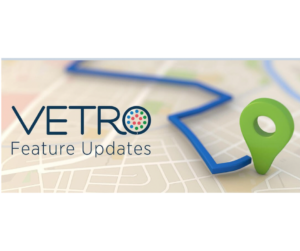Charting Your Course to a Profitable Fiber Deployment
Part 1
The decision to launch a new broadband service is a momentous one. It requires you to make a number of decisions that will put you, the new network operator, in a position to continually place and access data in a geospatial context. From concept to construction, your goal as an operator will be to deliver high-speed broadband to your customers, addressing concerns and resolving problems along the way.
But where to begin? How do I figure out where to build? What am I going to build? What is my network architecture going to look like? What will my customer base be? How will I get people connected, and, more importantly, keep people connected? These are the questions that plague new operators as they take their first steps into the broadband space.
For each decision, you’ll need to understand how street address-level data (prospects and customers) relates to datasets that only have a latitude and longitude. Or, you’ll have to understand how that data fits into a polygon that may or may not relate with precision to street addresses, like a census tract, grant area, or network zone. In each case, your best friend is going to be a program with easy to use tools for analyzing and displaying the massive, disparate datasets native to your project.
In this four-part series, we’ll take a look at the where, what, why, and how of building a reliable, profitable fiber network. Today, we’re going to start at the beginning: the where.
WHERE DO I BUILD?
Whether you’re building your network purely for commercial profit or for the public good, a thorough grasp of population density, competition and demand are crucial to understanding the feasibility and economic viability of your project. You’ll want to get a feel for what your future customers need, where they need it, and where the competition is falling down in delivering that need. Ultimately, these factors will impact the percentage of prospects that actually subscribe to your network, known as the “take rate” on your network service. If you’re working for the public good, a sufficient take rate will be necessary to satisfy investors and maintain grant funding. If you’re building with commercial capital, you’ll need a sufficient take rate to generate a return on investment. Let’s dig in.
Population Density
Few factors are as significant in predicting a positive return on investment (ROI) than population density. While things like cost per strand mile may vary due to permitting and safety regulations, each mile of strand or conduit typically has a set cost. Because your strands cost the same wherever you’re building, understanding the population density of your service area can greatly decrease your cost per customer. 500 feet of fiber passing ten single-family homes won’t show the same returns as 500 feet passing ten apartment buildings, each with a handful of individuals residing within.
You have several options for determining an area’s population density. A network operator can use publicly accessible data to get a rough idea of the potential upside of building in one area vs another. Census data is often invaluable to the first-time network operator; an exhaustive list of the number of households in a city, which can often be paired with data from a municipality’s department of transportation to estimate the number of homes per mile of road.
This method is tried and true when assessing the feasibility of a town or city as a whole, but zeroing in more closely on districts and neighborhoods requires a more deft touch. It will become necessary when dealing with smaller areas to evaluate densities by counting service addresses within a polygon or “zone” and compare it to the miles of plant you must build to serve that zone. Effective, simple mapping tools for lightning-fast evaluation and design are crucial factors in your success as a network operator.
With these factors in mind, it’s also important to consider deployment and maintenance costs. Population density has a significant impact on your ability to cover the costs of your ongoing network maintenance. Recurring costs like pole attachments, power and labor will need to be covered on an ongoing basis. Understanding the population density of your coverage area will help you understand what’s required from a maintenance perspective.
Competition
Once you have a solid grasp of your potential customer base, it’s important to understand your competition. Most fiber network builders will face competition from local cable companies offering DOCSIS Cable Broadband or telephone companies offering a 100mbps DSL connection. While a VDSL (Very High bitrate DSL) connection offered by a telephone company can reach those speeds, their availability is limited to a very short distance from the serving electronics. Understanding the locations of these electronics can help identify opportunities to connect customers who are too far away to get adequate bandwidth.
Cable broadband providers are a more significant threat to a builder of fiber networks because a provider offering DOCSIS 3.1 or higher will be able to offer download speeds of up to a gigabit per second, and in the near future, more. However, while bandwidth a cable provider offers in any given community will generally be the same throughout the local network, actual performance may vary. The bandwidth available in any given service area will depend upon the level of investment in that service area. Maintenance, upkeep, and equipment can all affect network performance.
Since cable companies won’t share this information publicly, the only way to answer these questions is in geospatial terms. You’ll need to collect data about where existing or competitive broadband networks exist, the locations of dense population centers, and where prospects are motivated enough for better service that they will reach out and ask you to come to the neighborhood. Then, you’ll need to understand how those data points relate to each other in geographic terms.
Demand Aggregation
Understanding the needs of your community is perhaps the most important part of building a profitable, sustainable fiber network. There are several ways to go about measuring demand, but the most simple is just monitoring social media traffic and local news for the general tone of discussions about internet (and specifically broadband) service. While imprecise – you won’t be perusing datasets using this method – this approach can give you an initial read on whether the community will be receptive to a new ISP. A more direct approach is to conduct a survey of customers in your proposed service area and include questions about their overall satisfaction with their current provider, and if they’d be willing to switch to a superior technology at different price points.
This is a good step in making a preliminary evaluation, but this method of measuring demand asks for no commitment from the end user and provides nothing to the service provider’s long term marketing strategy.
This is when a demand-driven build plan can be beneficial. In this approach, you design your network and divide it into zones, or sections. You then evaluate your cost to serve each zone of the network and launch a marketing campaign to get customers to register online. The marketing campaign asks potential customers to agree to take service if it’s offered with the commitment that you’ll actually follow through and build the zone if enough customers sign up to meet your target ROI. This technique was pioneered by Google during their fiber to the home project in Kansas City in 2012.
This model has been widely used all around the world, and lately, software tools to replicate that approach are becoming available. A thoughtfully designed mapping system can help facilitate the pre-launch design work and project costing necessary to determine the goals for each zone, while data capture and visualization products like VETRO FiberMap’s Z-Manager can help collect customer data and display progress toward goals in each zone.
Solving for Funding
Finally, we come to the crux of the matter: funding. Building a fiber network is an expensive proposition. You’re not going anywhere without the capital to put your vision into motion. Fortunately, increased interest from private investors, as well as federal, state, and local funding has made generating capital for your build a somewhat less daunting prospect.
To access these funds, however, an understanding of how your project fits with a whole new layer of geographic boundaries is critical. Federal funds are most often awarded at the census tract level based upon the percentage of addresses within the tract that are below the desired bandwidth availability measures.
Current programs that fund Broadband deployment at the federal level include ReConnect, a program by the USDA that focuses on rural areas and can award funds in the form of grants, loans or a combination of the two and RDOF (Rural Digital Opportunity Fund), an FCC Sponsored reverse auction that offers funding for underserved rural communities. For low income areas, the NTIA offers BEAD (Broadband Equity, Access and Deployment) and the Department of Housing and Urban Development (HUD) offers Community Development Block Grants to subsidize network improvements in economically disadvantaged areas.
On the other hand, programs administered by state broadband agencies are usually much more flexible and can often be applied to very specific, street-level plans. Local funds can be for specific projects, or the town may require a potential builder to cover all of its residents in order to receive funding.
Successfully applying for and being awarded these monies to fund your project requires a detailed understanding of where the customers are and what services may or may not already be in that area. If your application is contested by a party that already has service in an area, the fight may come down to who has the more reliable information about what is happening on the ground. Demand aggregation and simple, effective data management tools offered as part of VETRO FiberMap’s platform might just give you the edge you need.
What’s next?
This may all seem like a lot, and that’s because it is. Building a fiber network from the ground up is a complex, labor-intensive process with many moving parts that will require you and your team to have a keen understanding of your market, from potential customers to providers already operating in their area. This is necessary to secure state and local funding for your build, and will also help you keep tabs on the competition.
Read the next post in this series: Tips for What You Need to Build Your Network
If you can’t wait, download our Guide to Building a Profitable Fiber Network.


